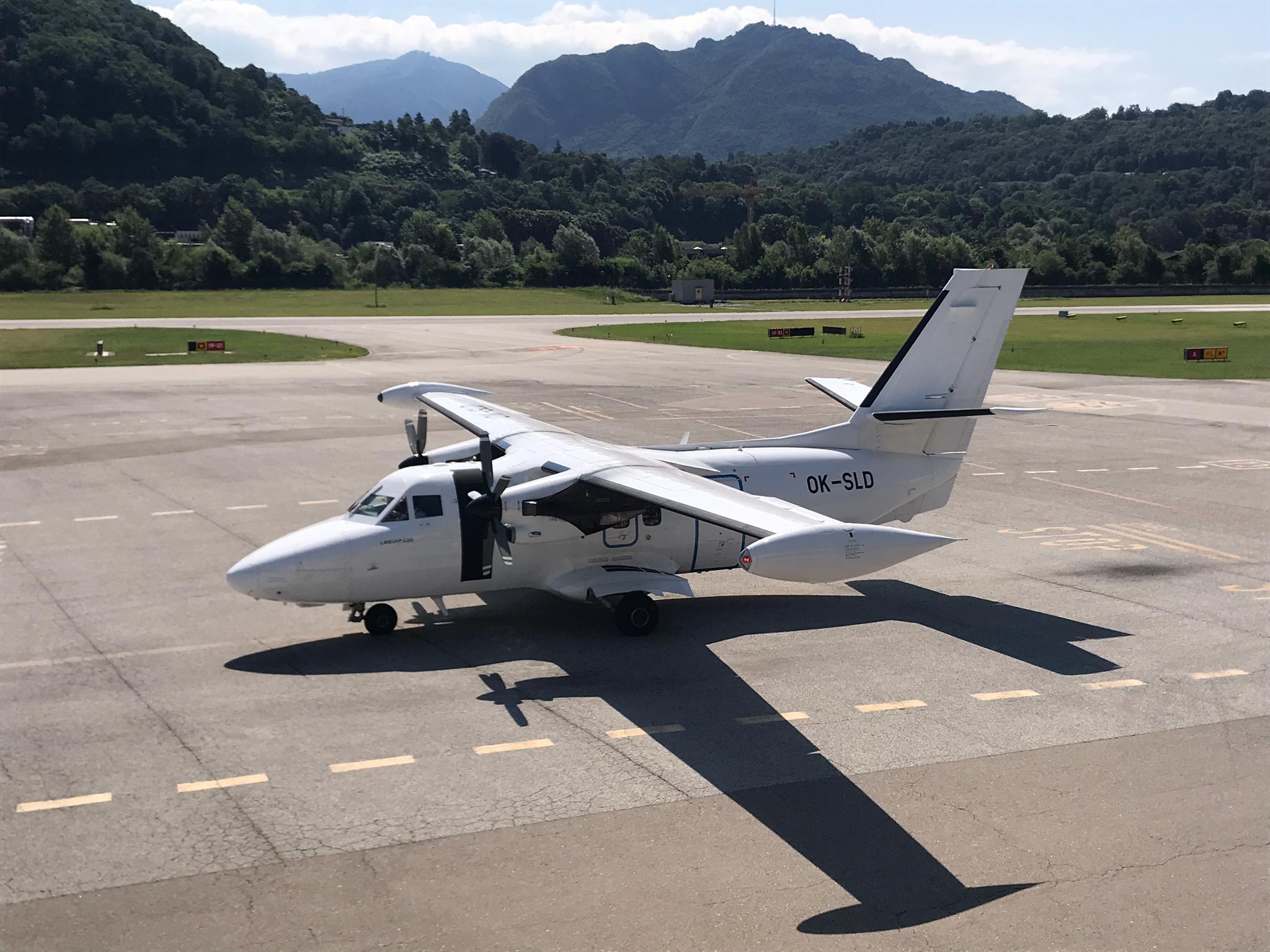C26 Aircraft - The drug-destroying RC-26B Condor surveillance plane has flown its final mission, bringing the curtain down on a very eventful career.
The US Air Force has retired one of its lesser-known assets, the RC-26B Condor surveillance aircraft. Although the twin-turbine could hardly seem more inconspicuous, it actually led a very remarkable career as it emerged from the obscure war on drugs and became a highly versatile asset for a wide range of missions. In many ways, it was the "little spy machine that could."
C26 Aircraft
Yesterday, the Pentagon released images showing the final flight of the last RC-26B at Truax Field Air National Guard Base and Dane County Regional Airport in Madison, Wisconsin. The 115th Fighter Wing (FW) based here - better known as the F-16 jet fighter - completed operations with the RC-26B on 28 December. The surveillance aircraft had been at Truax since January 1992.
Jetblue Ceo First Witness In Us Lawsuit Against Two Airlines
Wisconsin Air National Guard maintenance specialists return the RC-26B to the hangar at Dane County Regional Airport after its final flight on Dec. 28, 2022. U.S. Air National Guard photo by Master Sgt. Paul Gorman
Most recently, the RC-26B primarily supported counternarcotics operations out of Truax, with a group of seven 115th FW airmen and two military information support operators (MISOs) assigned to the mission. In addition to working with state and federal authorities to combat narcotics, the team was also available for counterinsurgency and homeland security missions.
However, the Air Force decided to retire all 11 RC-26Bs across its fleet as a cost-cutting measure and replace the guided reconnaissance capacity with drones, some of which are increasingly freed from overseas combat missions. In this way, the Air Force stated that there will be no capacity shortfall, although it remains to be seen.
A Wisconsin Air National Guard RC-26B makes its final pass over Dane County Regional Airport in Madison, Wis., Dec. 28, 2022. U.S. Air National Guard photo by Senior Master Sgt. Paul Gorman
Keesler Showcases Innovation For Aetc Leadership > Keesler Air Force Base > Article Display
"The hours and expertise of all the aircraft is just surreal," described Lt. Col. Benjamin West, director of the Wisconsin RC-26 program, in an official release marking the aircraft's retirement. "The number of civilians, suspects, families and ordinary citizens who don't know they're alive is because those guys were experts at what they did, helping drug dealers track down and arrest them in ways that couldn't have been done in the first place."
"Having spent much of my police career in narcotics work, I can tell you that this job saves lives," added the US Army colonel. Paul Felician, director of the Wisconsin National Guard's anti-drug program. "What this aircraft could do for law enforcement, take more drugs off the street and keep people safe from immediate risk of harm — it's a sad day."
The RC-26B was on duty as part of the National Guard's anti-narcotics program, as it used internal sensors to identify and track suspects, for example. Any suspicious activity detected by the aircraft crew will be reported to the law enforcement authorities. In this way, the types of high-speed pursuits that can be particularly dangerous to law enforcement personnel and civilians were significantly reduced.

U.S. Army Col. Paul Felician, director of the Wisconsin National Guard's Drug Enforcement Program, recognizes Lt. col. Benjamin West, director of the Wisconsin RC-26 program, following the final flight of the state's RC-26B on Dec. 28, 2022. U.S. Air National Guard photo by Staff Sgt. Cameron Lewis
Aircraft N6105l (1993 Fairchild C 26b Metro 23 (sa 227dc) C/n Dc 831m) Photo By Zane Adams (photo Id: Ac250744)
On a more covert level, the intelligence gathered by the RC-26B also proved critical to law enforcement, who used it as evidence to disrupt or even destroy certain drug trafficking groups.
The RC-26B's "eye in the sky" capabilities also made it well-suited to other missions outside of counter-narcotics work, particularly helping to coordinate responses to natural disasters.
"On the counter-narcotics side, we've helped law enforcement track individuals," explained Lt. Col. Adam Kinzinger, who has been an RC-26 pilot for more than 15 years. "In a post-hurricane situation, post-Hurricane Katrina or Puerto Rico, you can go up and we can link the video to people on the ground so they can see from the air what's damaged, who needs to be rescued, and they can coordinate from there."
Wisconsin Air National Guard's RC-26B 115th Fighter Wing pilots and military information support operators gather with Wisconsin National Guard leadership after the plane's final flight Dec. 28, 2022. U.S. Air National Guard photo by Master Sgt. Paul Gorman
Index Of /image/idop/craft/c26
The RC-26B's involvement in the aftermath of Hurricane Harvey, which led to catastrophic flooding and more than 100 deaths when it made landfall in Texas and Louisiana in August 2017, is something that
A view of Hurricane Harvey damage as seen by an RC-26B sensor operator.Texas ANG
Hurricane Harvey was just one of the many families RC-26Bs helped. The type was used for damage assessment and management after the 2005 Hurricane Katrina hit Louisiana, to monitor California's 2007 wildfire season. These machines were active over the Midwest during the 2008 flood and also helped respond to the Deepwater Horizon oil rig explosion in 2010, just to name a few.
More controversial was the use of RC-26Bs to control protests, including those that prompted the police killing of George Floyd in Minneapolis, Minnesota in 2020. California and Minnesota during those protests raised concerns that they were being used to collect personal information. information about citizens. Although the Air Force stated that this was not the case, it was revealed that the National Guard Bureau had improperly authorized these flights.
Cn 295 Hi Res Stock Photography And Images
The RC-26B entered service in 1989 in response to requests from Texas and California Air National Guard units for counternarcotics. The Air National Guard then began converting existing C-26B aircraft—military versions of Fairchild Swearing's SA-227 Metroliner—which up until then had been used for administrative and logistical roles. To support the conversion program, the Air National Service received one Metroliner as a test platform, operating under the designation UC-26C.
However, the program soon ran into problems when US military inspectors found that the Air National Guard had begun acquiring aircraft without a proper analysis of spare parts or possible cheaper alternatives. Additional purchases and conversions were suspended until the National Guard could properly respond to these claims.
In the end, the National Guard worked out some sort of settlement, whereby official ownership of the aircraft now rests with Air Cerberus, which they registered with the US Civil Aircraft Registry. At that time, the aircraft were designated C-26B (Counter-Drug) or C-26B (CD). However, it was suspected that Air Cerberus was some sort of "front" organization run by the National Guard.
In 2005, the aircraft received the official US military designation RC-26B and eventually returned to full military ownership, although maintenance was continued by contractors.
Pre Owned Aircraft Values Climb Again
Normally, the RC-26 would be operated by a crew of three – pilot, co-pilot and sensor operator – supported by a ground component drawn from an Air National Guard reconnaissance squadron. There was also often an agent or a police officer on the plane for anti-narcotics work.
The aircraft had several sensor adaptations during its career, including a large sensor pod under the fuselage with a radar imaging sensor. This provided synthetic aperture imaging capability to capture still images, day or night and in most weather conditions.
Block 20s had a sensor tower with both electro-optical color and infrared cameras. Full motion video could be transmitted to ground personnel in near real time via the US Army's Remotely Operated Video Receiver (ROVER) system or the RC-26's own Dragon datalink.

A sample of infrared images was captured by the RC-26B on the sensor tower. National Guard Bureau via FOIA
Aviation Photographs Of Registration: F Htsb
Meanwhile, Block 25R aircraft were also equipped with Signs Intelligence (SIGINT) equipment to locate and intercept enemy communications, opening up opportunities for overseas missions. In this guise, the RC-26B also flew terrorist tracking missions in Iraq and Afghanistan, logging an impressive number of flight hours, although they went largely undetected.
Finally, the Air National Guard converted the RC-26Bs to a common standard known as Block 25R+ to make the entire operation more streamlined and efficient. This configuration also included improved turret sensors, updated electronics and antenna arrays, and a Link 16 data link, although it is not entirely clear how far the effort has progressed.
And while the 115th FW was the last bastion of RC-26B operations, these planes had previously been assigned to other Air National Guard units across the U.S., meaning the aircraft were ready to assist with domestic emergencies and support countermeasures as well. drug efforts.
Wisconsin Air National Guard RC-26B maintenance specialists tow it to the airstrip at Dane County Regional Airport after its final flight. US. Air National Guard photo: Senior Master Sgt. Paul Gorman
Air Mail News
With all this in mind, it is
C26 mcintosh, c26 bus route, mcintosh c26 for sale, befco c26 finish mower parts, c26, minimax c26 genius, c26 bulb, himo c26 review, c26 light bulb, ms24693 c26, carhartt c26, carhartt c26 jacket
/arc-anglerfish-tgam-prod-tgam.s3.amazonaws.com/public/PXA2UEHMCFBXPIFRSJQVQ4WDFU)

0 Comments